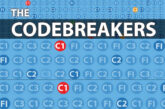
Need help with cracking those EICR codes? The technical team at NAPIT, with the help of the 18th Edition Codebreakers publication, answer your latest coding queries. Click on the photos for a closer look!
DAN MCNULTY: This was found on a recent EICR. I’m not sure the electrician quite understood the difference between RCBOs and standalone RCDs!
Unfortunately, the failure to understand the basics of RCD protection is all too common in our industry. By doing this, the installer has shown that he/she has no real understanding of RCDs, their selectivity, and the issues associated with unwanted tripping.
If this is a domestic installation, and I’ll assume it is, the mistake made isn’t likely to cause an immediate injury and, provided each RCD operates within its parameters, there’s no potential for danger. If there’s no immediate or potential for danger, there is no C1 or C2 issue(s).
What we do need to be aware of, however, is the need to have adequate division of circuits within an installation, which we do here, as it’s a split load board.
What we are lacking on each side of the split sections is selectivity. As each of the RCBOs are ? 30 mA (BS EN 61009), and the RCCBs are ? 30 mA (BS EN 61008), there is no guarantee that a fault on a circuit protected by an RCBO, will cause the RCBO to trip; the RCCB supplying the bank of RCBOs may trip.
If this happens, a fault on one circuit could lead to all of the RCBO protected circuits in that bank being disconnected, which could be a problem if sensitive equipment or loss of data is an issue in a home office, for example.
Regulation 531.3.2 requires that we take account of unwanted tripping, through correct selectivity of RCDs; in a domestic scenario, it isn’t likely, in most cases, to be an issue, but not all installations are the same. If there are no life safety services that could be detrimentally affected by unwanted tripping we wouldn’t adversely Code it.
Where RCD selectivity is a requirement, Regulation 536.4.1.4 should be followed. If selectivity is a requirement for safety reasons and isn’t achieved, it could mean there is a potential for danger, which would attract a Code C2.
The simplest fix here is to remove the two RCCBs, and source a new busbar, to reconfigure the CU as a dedicated RCBO board, to alleviate any selectivity issues.
 Possibly the most important issue is that these devices are all Type AC RCDs, which means if any equipment installed in the installation has the potential to introduce DC leakage currents, the RCDs may not operate under fault conditions. We call this ‘DC masking’ and it is a result of DC saturation of the detection coils within the RCD.
Possibly the most important issue is that these devices are all Type AC RCDs, which means if any equipment installed in the installation has the potential to introduce DC leakage currents, the RCDs may not operate under fault conditions. We call this ‘DC masking’ and it is a result of DC saturation of the detection coils within the RCD.
It is difficult to inspect and test for this, as installed equipment is invariably powered down to perform the tests. This means any possible DC leakage current is not present, and the test result could therefore be inaccurate.
If the inspector finds equipment that can cause DC leakage current, or it is known that the manufacturer of equipment states that a minimum RCD of Type A, or more, is used then the Type AC RCD must be coded as potentially dangerous, as it may not provide the additional protection it was designed for.
We will assume in the scenario above, that these conditions have been investigated and the AC devices are acceptable for continued use. For the purposes of this column I have, however, given wordings, Regulations, and possible Codes if an installation is suspected/confirmed to have DC leakage currents present.
If in doubt, Figure 3.19 from our On-site Solutions guide (which is also covered in the Codebreakers book) gives types of RCDs, their associated sensitivities and recommended connection points to combat DC leakage current masking.
Find out how to order your copy of NAPIT Codebreakers by clicking here









